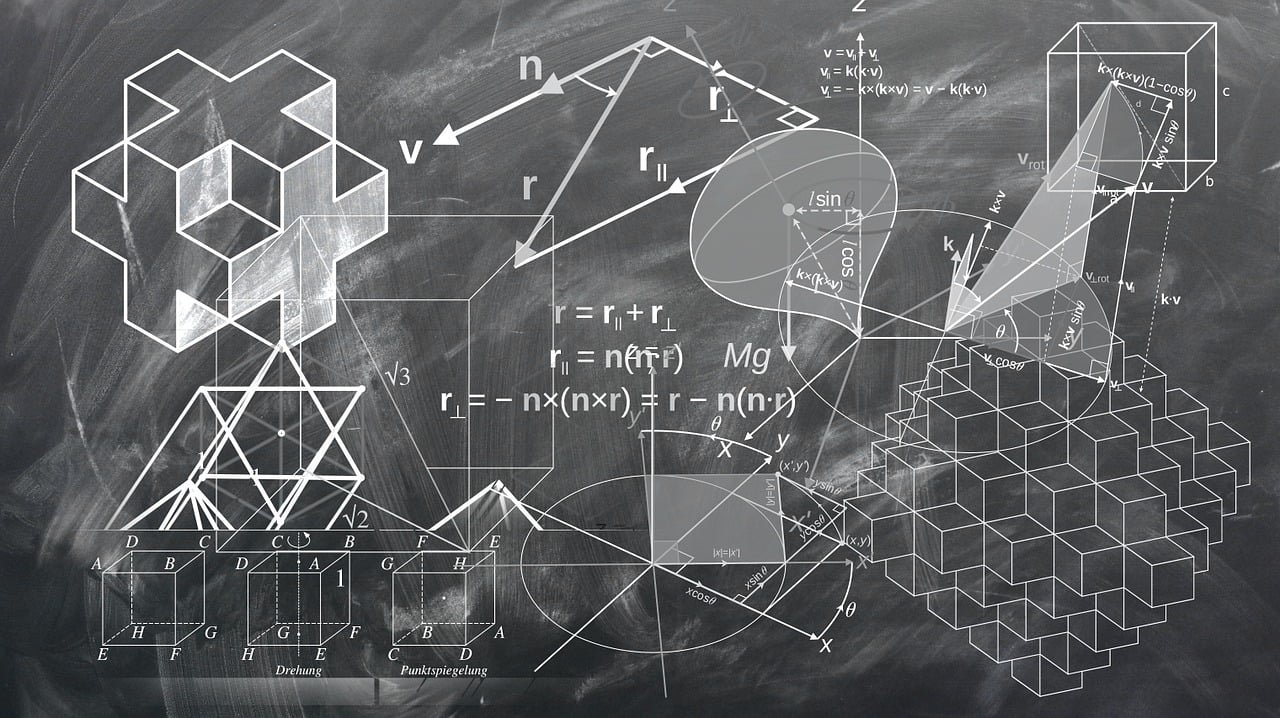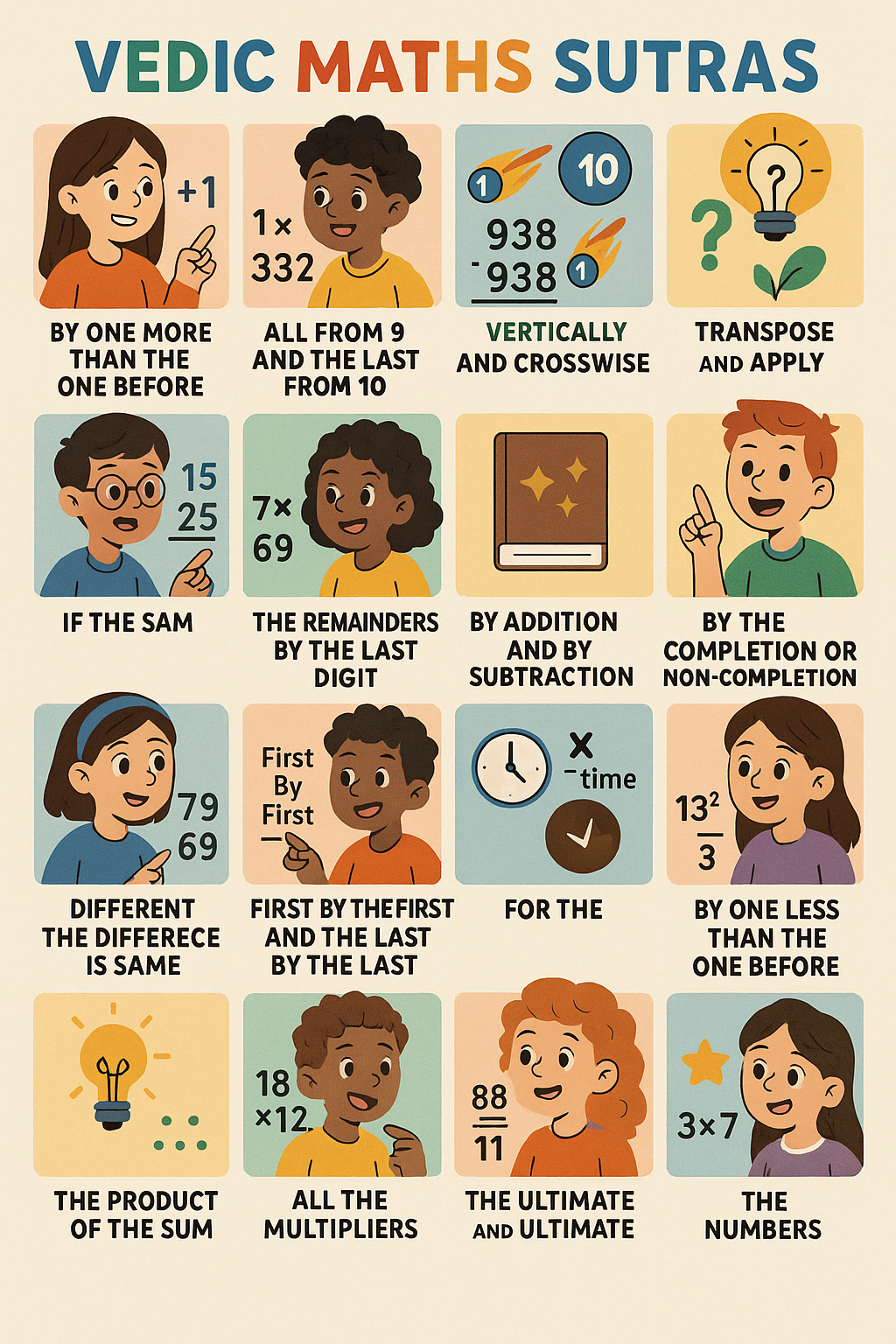Physical Address
304 North Cardinal St.
Dorchester Center, MA 02124
Physical Address
304 North Cardinal St.
Dorchester Center, MA 02124

Vedic Maths condenses arithmetic and algebra into a handful of patterns that turn long calculations into quick mental games. By the end of this mini-course you will know why its 16 ancient “sutras” still matter, how to apply them to every core operation, and exactly how to practise so that school tests and competitive-exam worksheets feel effortless. Faster number sense, stronger memory, and fearless problem solving await you—without a calculator in sight.
The term “Vedic Mathematics” comes from the book of the same name published in 1965 by the Shankaracharya Swami Bharati Krishna Tirtha. He claimed to have reconstructed 16 arithmetic sutras and 13 sub-sutras from the Atharva Veda after years of meditation. Although historians show that these sutras do not actually occur in the preserved Vedic corpus and regard the system as a brilliant twentieth-century synthesis rather than a literal rediscovery, the techniques themselves are undeniably clever and widely taught today.
Speed tests on middle-schoolers demonstrate that applying the sutras can cut computation time by up to 50 percent while improving accuracy. Beyond exam performance, educators value Vedic Maths because it cultivates pattern recognition, concentration, and bilateral brain activity—all crucial for STEM learning.
The entire toolkit rests on just 29 aphorisms. Here are the headline sutras every beginner must memorise:
| # | Sanskrit Name | Working Translation |
|---|---|---|
| 1 | Ekādhikena Pūrvena | By one more than the one before |
| 2 | Nikhilam Navataścaramam Daśataḥ | All from 9 and the last from 10 |
| 3 | Ūrdhva–Tiryagbhyām | Vertically and crosswise |
| 4 | Parāvartya Yojayet | Transpose and apply |
| 5 | Śūnyam Sāmyasamuccaye | If the total is the same, it is zero |
| 6 | Anurupyena Śūnyamanyat | If one ratio is zero, the others are zero |
| 7 | Saṅkalana–Vyavakalanābhyām | By addition and subtraction |
| 8 | Pūraṇā–Apūraṇābhyām | By the completion or non-completion |
| 9 | Chalanā–Kalanābhyām | Differences and similarities |
| 10 | Yāvadūnam | By the deficiency |
| 11 | Vyastisamaṣṭih | Specific and general |
| 12 | Śeṣānyankena Caramena | Remainders by the last digit |
| 13 | Sopāntyadvayamantyam | Ultimate and twice the penultimate |
| 14 | Ekānyūnena Pūrvena | By one less than the one before |
| 15 | Gunitasamuccayah | Product of sums equals sum of products |
| 16 | Guṇakasamuccayah | Factors of sums equal sum of factors |

Before the “wow” tricks, master two mental habits.
Practice turning each homework number into “base ± deficiency” until it is automatic.
Subtract 8,647 from 10,000 instantly: change every digit but the last to its 9-complement and the final digit to its 10-complement → 1 3 5 3.
Need 659 + 378 quickly? Note that 659 is 1 below 660; steal 1 from 378 and add to 659 → 660 + 377 = 1,037. One thought, no carrying.
Multiply 243 × 312:
Calculate 992 × 997:
Deficiencies are −8 and −3 from 1000.
– Cross-subtract: 992 – 3 = 989 (or 997 – 8).
– Multiply deficiencies: (−8) × (−3) = 24.
Pad 24 to three digits (024) because the base is 1000.
Answer = 989,024—no long tables required.
For 9 × 7 in a single line:
Write deficits from 10: 9 → −1, 7 → −3.
Cross-subtract: 9 − 3 = 6 (tens), multiply deficits: (−1) × (−3) = 3 (units) → 63.
Divide 1,023 by 89. Since 89 is 100 − 11, write 11 as the “negative flag.” Work left-to-right: bring down 10, multiply by 11, add, repeat. The quotient appears progressively; mental workers need only the flag and the running remainder.
For 243 ÷ 9, split 2 | 43. Bring down 2 as first quotient digit, multiply by the deficiency 1, add to next digit, continue. Result = 27 remainder 0 in three oral steps.
To square 85: multiply the leading digit 8 by one more (9) → 72, append 25 → 7,225.
96²: deficiency = 4. Subtract it: 96 − 4 = 92; square deficiency 4² = 16; answer = 9,216.
The Dwandwa-Yoga (duplex) rule quickly builds paired digit sums, allowing mental extraction of √1,23,21 ≈ 351.
13³ (base 10): excess = 3. Add thrice its excess (3 × 3 = 9) to 13 → 22; write successive terms 22 | 9 × 3 = 27 | 3³ = 27; carry appropriately → 2,197.
Cube root of 39,304:
Scholars caution that calling the sutras “Vedic” is historically inaccurate, and some tricks prioritise speed over conceptual depth. The best classrooms therefore blend Vedic Maths with formal place-value proofs so students grasp both the “how” and the “why.”
You now own a toolbox that can turn 998 × 997 into a two-second mental stunt, strip fear from fractions, and leave extra exam minutes for thinking. Remember:
Combine these habits with standard curriculum methods and you will enjoy the best of both worlds: insight and lightning reflexes. Happy calculating!